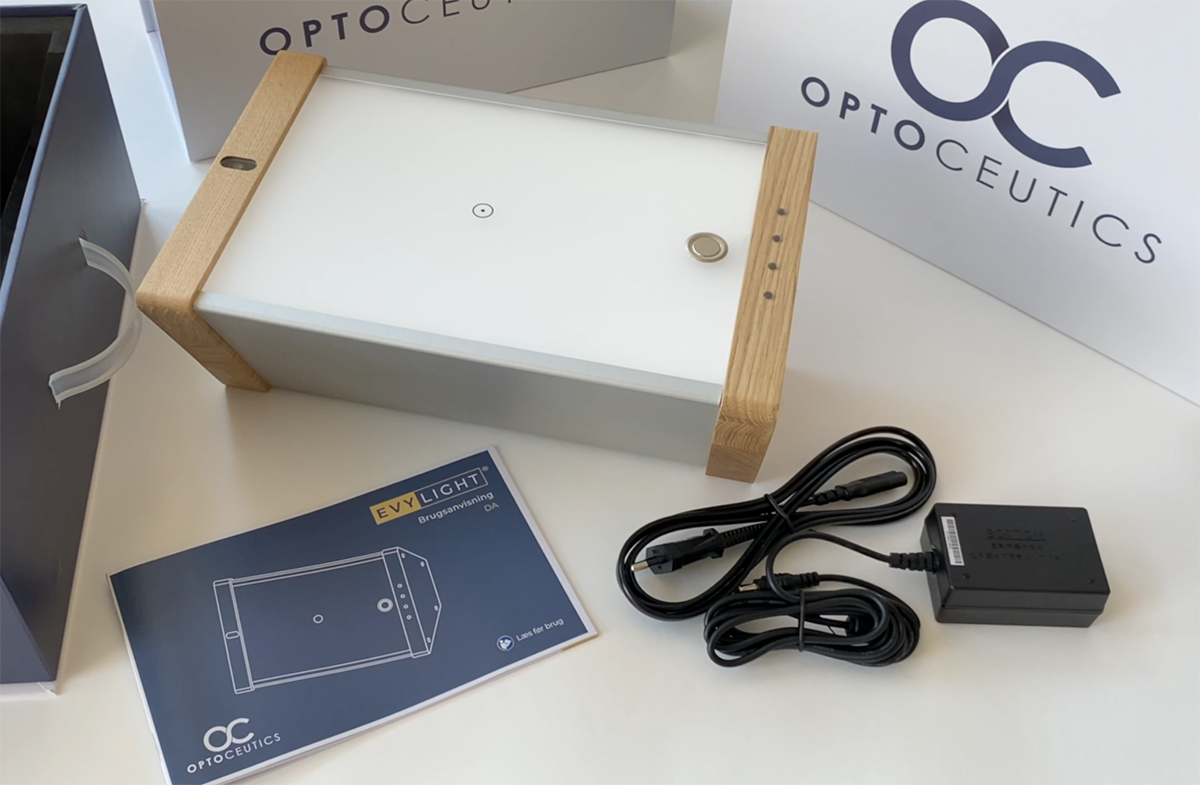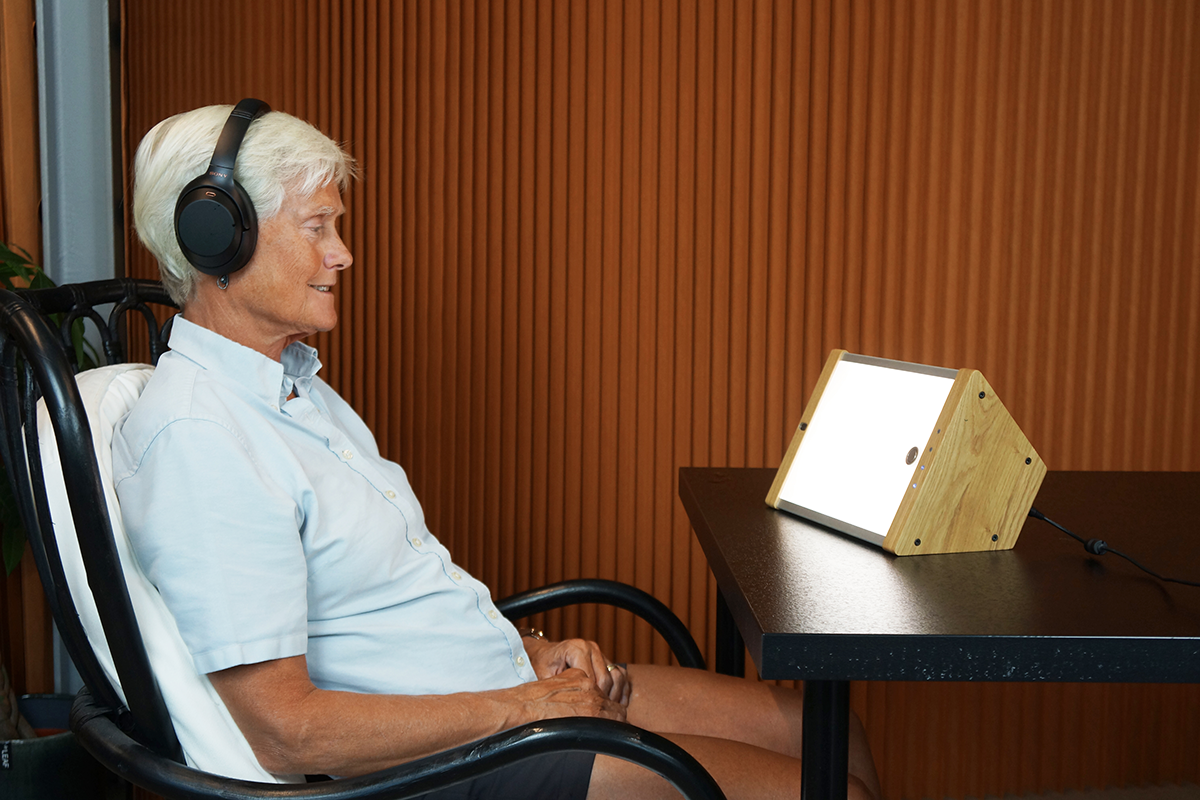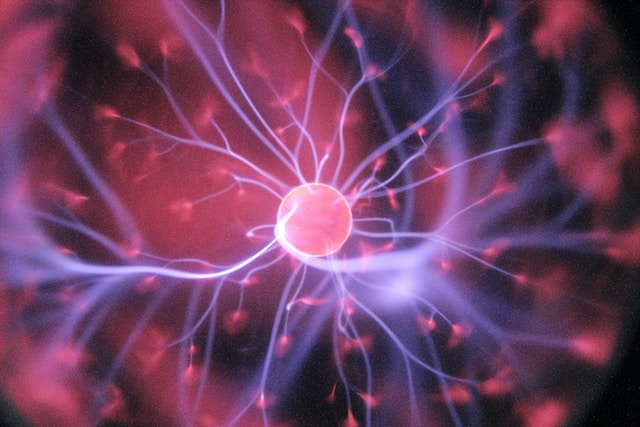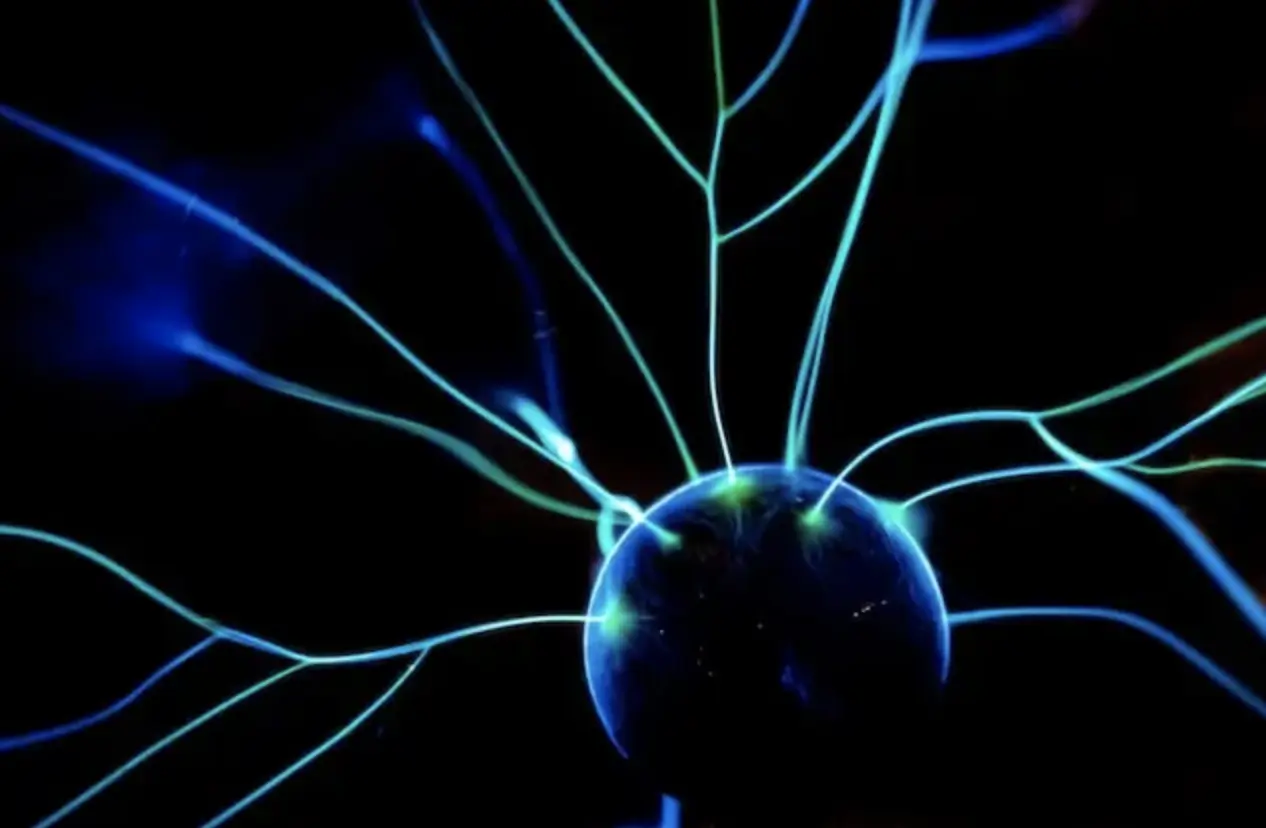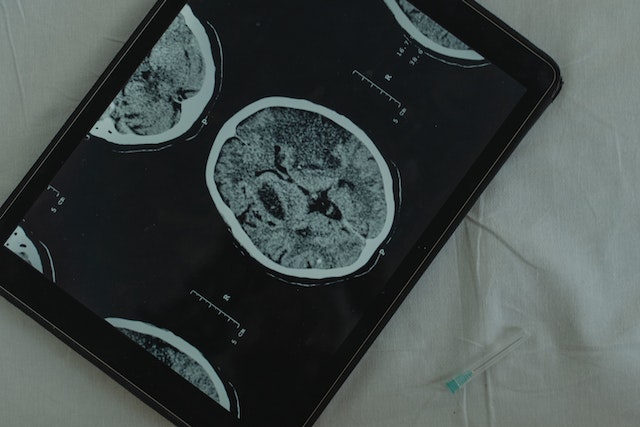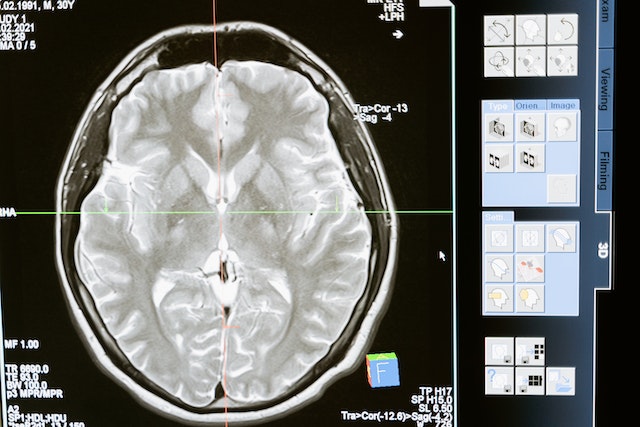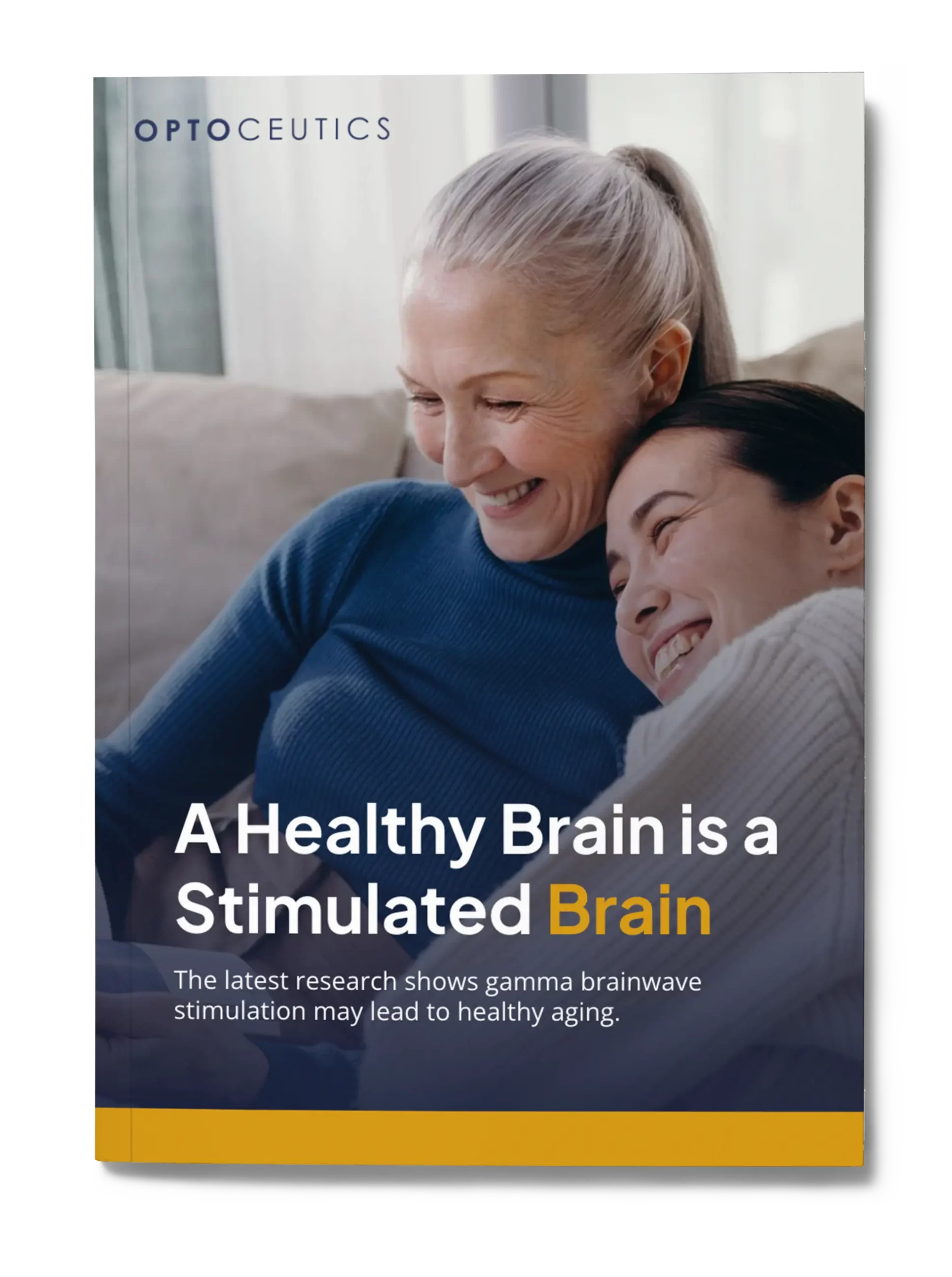Alzheimer’s disease is a type of neurodegenerative condition that predominantly affects people over the age of 65. As our population continues to skew towards an older demographic, more individuals are affected by this disease than ever before. Although there is no cure for this condition, there are several different treatments available – all with marginal benefits. Gamma light therapy is a relatively new treatment option for people with Alzheimer’s disease, and it looks to offer a plethora of benefits.

Christopher Ravn
Key Takeaways
1. Alzheimer’s disease is a neurodegenerative condition that disrupts gamma waves in the brains of those afflicted with the disease.
2. Gamma light therapy treatment for Alzheimer’s disease is a relatively new treatment, but it offers a lot of potential benefits.
3. This form of treatment is non-invasive, drug-free and features no significant side effects.
4. By using light therapy lamps such as EVY LIGHT, people with Alzheimer’s can slow the progression of the disease, improve sleep patterns and enjoy a better quality of life.
Table of Contents
1. What Are Gamma Waves Connection To Alzheimer’s And What Are Their Benefits?
2. How Do The Gamma Waves In The Light Help With Alzheimer’s?
3. What Does A Gamma Wave Light Therapy Session Include?
4. Ongoing Research And Clinical Trials In Gamma Light Treatments For Alzheimer’s
5. How Does Gamma Light Therapy Impact Brain Functionality in Alzheimer’s Patients?
6. How Does Gamma Light Therapy Impact Brain Functionality in Alzheimer’s Patients?
7. What Is The Best Gamma Wave Device To Use With Light Therapy For Alzheimer’s?
8. How Much Does Gamma Light For Alzheimer’s Cost?
9. Can The Gamma Waves In The Light Be Detrimental If You Have Alzheimer’s?
10. Does Gamma Wave Light Therapy Help With Sundowner’s Syndrome?
What Are Gamma Waves Connection To Alzheimer’s And What Are Their Benefits?
Gamma waves are a type of brain wave pattern in our brains. They are tied to our higher levels of cognition, such as problem-solving or engaging in mental activities. Interestingly, gamma waves are disrupted in people with Alzheimer’s disease, which is the leading cause of many symptoms associated with the condition. In short, dysfunctional gamma waves in the brain lead to things like memory loss, loss of focus and changes in behavior.
Light therapy is a treatment that targets these disrupted gamma waves and synchronizes them to a more appropriate frequency. This frequency of 40Hz – or 40 pulses of light per second – looks to adjust the disruption in the brains of people with Alzheimer’s disease, helping with symptoms such as cognitive decline, unstable moods and attention spans.
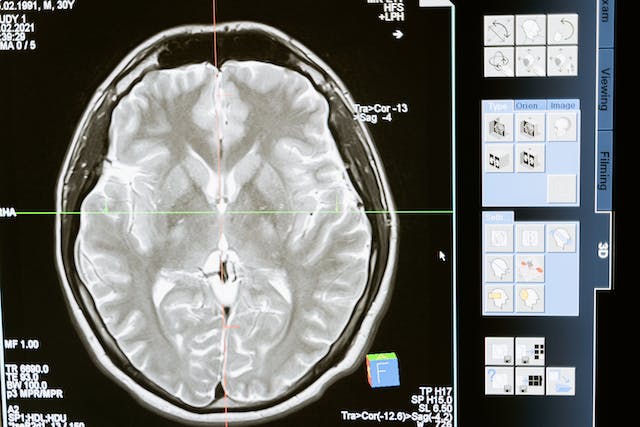
Does Gamma Light Help With Alzheimer’s?
Although research is still ongoing, it appears as though gamma light Alzheimer’s therapy could be an effective treatment option for people with this disease. Most notably, research from the Massachusetts Institute of Technology (MIT) points to the potential of this type of treatment for Alzheimer’s disease. By exposing participants to a 40Hz pulse of light, gamma waves in the brain were synchronized. This looks to provide a number of benefits ranging from lower levels of amyloid plaques in the brain to enhanced moods and improved sleep patterns.
Other Treatments Vs Gamma Light Therapy For Alzheimer’s
The other treatments available for Alzheimer’s disease are all quite limited, with medications such as leqembi, galantamine, rivastigmine, and donepezil only offering marginal benefits. Moreover, there are some side effects associated with all of these medications, further limiting their efficacy.
In contrast, Alzheimer’s gamma light therapy could offer a drug-free alternative treatment. There appear to be no significant side effects associated with light therapy treatment, making it viable to use standalone or as a complementary solution.
How Do The Gamma Waves In The Light Help With Alzheimer’s?
Light therapy works by targeting the gamma waves in our brains. In order to do this, the light is set at a specific frequency of 40Hz. Light-emitting diode (LED) technology is the most effective way to achieve this frequency, ensuring that the therapy can interact with the disrupted gamma waves in the brains of Alzheimer’s patients. When this occurs, the therapy can help synchronize the irregular brain waves and bring them closer to their natural state of 40Hz.
Clinical studies and trials, such as this one, made use of LED technology to set the frequency to 40Hz and directly affect circadian systems. By using light-stimulating gamma waves and Alzheimer’s as a focus, patients experienced marked improvements. This was shown to have notable benefits for people with dementia and Alzheimer’s disease, including improved sleep patterns and reduced behavioral disruptions.

Latest Small Study Findings
Several small studies and clinical trials, such as the work undertaken at MIT and at OptoCeutics, have looked at how light therapy can manipulate gamma waves in the brains of Alzheimer’s patients. So far, the results have shown a lot of promise and could highlight that light therapy is a viable treatment option. It looks as though it helps with the preservation of neural connectivity in the brain, as well as slowing cell death and the spread of amyloid proteins in the brain.
The other notable finding is the safety associated with light therapy that targets gamma waves. All of the clinical trials highlighted no significant side effects from participants, while also demonstrating multiple potential benefits. This means it could be a therapy that works well on its own or as part of a complementary treatment plan.
Gamma Light Therapy Mechanisms And Cellular Effects
Gamma light therapy works in a very specific way – by synchronizing with the gamma waves in our brains. By doing this, the treatment can impact cell mechanisms to promote healthier brain functionality. It does this in a few different ways, including:
- Mitochondrial Activation: Mitochondria are essentially battery cells in the brain. Gamma light therapy can potentially activate more mitochondria in the brain, providing more energy for brain functions.
- Reactive Oxygen Species (ROS) Modulation: ROS modulation is a process in the brain responsible for healthy cell growth. Gamma light therapy appears to boost this process, promoting new cell growth in the process.
- Neuroprotection: Neuroprotection involves strengthening neural pathways to keep them healthy. Gamma light therapy could help slow the progression of Alzheimer’s symptoms by enhancing neuroprotection.
There is still much to learn about how gamma light therapy interacts with the brain – particularly for people with Alzheimer’s disease. Currently, the research looks incredibly promising. Researchers suggest light therapy helps with improvements in brain metabolism, stress response modulation and blood flow to the brain.
What Does A Gamma Wave Light Therapy Session Include?
One of the most promising aspects of gamma wave light therapy is how simple it is. In essence, this treatment only requires the correct light source – a light therapy lamp – to work. It’s completely drug-free, non-invasive and safe to use. Some light therapy lamps, such as the EVY LIGHT, are even suitable for use in your own home.
If you’re wondering how to use gamma light waves to cognitive functions, you’ll be happy to hear it is relatively straightforward. Below is a breakdown of what a gamma wave light therapy session looks like:
- Setting Up the Lamp: The first step is positioning the light therapy lamp on a flat surface, around 2 feet away from where you’re sitting.
- Switch on the Light: Next, get into a comfortable position and switch the lamp on. The light should be cast over your face – but don’t look directly at the light.
- Use it Daily: For best results, light therapy treatments should occur once a day.
- Let It Work: You don’t have to interact with the light at any point during the treatment. Just sit back, relax and let the lamp do its work.
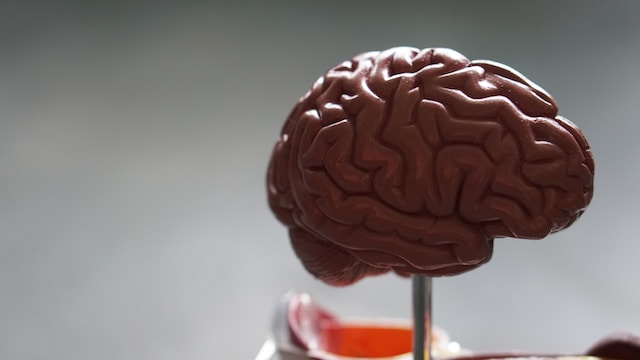
What Is The Best Device To Use With Light Therapy For Alzheimer’s?
Much of the research surrounding gamma wave light therapy for Alzheimer’s focuses on utilizing light pulses in the 40 Hz spectrum. So you’ll want to use a light therapy lamp with all of the functionality required to reach this frequency. You can potentially use the devices used in hospitals, but this could be costly and might not be covered by insurance.
Moreover, most light therapy devices use stroboscopic technology. This can be difficult to tolerate for many and can cause nausea and headaches. Instead, consider using Invisible Spectral Flicker (ISF) technology designed by OptoCeutics. This technology uses light pulses that the eye can’t see, which reduces many of the side effects mentioned above. At-home devices such as EVY LIGHT give you the chance to enjoy this treatment from the comfort of your own home, in a cost-effective way.
Ongoing Research And Clinical Trials In Gamma Light Treatments For Alzheimer’s
Most of the research surrounding gamma wave light therapy for the treatment of Alzheimer’s disease is recent or emerging. Of these, the MIT clinical trials from 2022 showed the most promise when using this form of treatment. Although the trial ended prematurely, the team has already begun work on further studies with a focus on patients who are at a high risk of Alzheimer’s disease.
The biggest concern is that these studies are small-scale and not conducted over an extensive period. Thankfully, new clinical trials and studies from reputable institutions such as the National Institute for Health and OptoCeutics. Over the next few years, the body of evidence surrounding gamma wave light therapy will continue to grow, offering more answers and potential uses for this treatment.

Enhance your brain performance through the power of light.
Comfortable and easy to use 40Hz light therapy to support and improve your brain function.
View Our LightHow Does Gamma Light Therapy Impact Brain Functionality in Alzheimer’s Patients?
From the growing body of research surrounding gamma light therapy, researchers have pointed to several areas where this treatment positively impacts brain functionality. These impacts include:
- Mood Stabilization: Gamma light therapy looks to stabilize the mood in Alzheimer’s patients. This is useful because mood disturbances are a common trait in this condition, causing issues like depression or anxiety.
- Amyloid Plaques: Another area where brain functionality is improved through light therapy is a drop in the number of amyloid plaques in the brain.
- Neuroprotective Qualities: It appears as though light therapy can promote neuroprotection across neurons in the brain, enhancing neural activity and slowing the onset of things like memory loss.
- Memory Improvements: Light therapy using gamma waves appears to directly improve memory function in Alzheimer’s patients.
- Gamma Wave Synchronicity: Gamma light therapy that uses 40Hz stimulation has been shown to boost gamma wave rhythms in the brain, which is associated with higher cognitive abilities. Enhancing gamma wave rhythms could counter the cognitive decline of patients with Alzheimer’s.
Effect Of Gamma Light Therapy On Behavioral Disturbances
There are various disturbed behaviors that become more common as Alzheimer’s disease progresses. This includes things like poor sleep patterns, heightened agitation and anxiety. Gamma light therapy has been shown to potentially diminish these symptoms and behaviors by re-synchronizing the brain waves of people with this condition.
By changing the disturbed behaviors of these individuals, gamma light therapy can help across many different areas. This includes enhancing the sleep patterns of people with Alzheimer’s, as well as other things like improving memory.
The Circadian System In Alzheimer’s Disease
The circadian system in our brains is responsible for sleep regulation. It tells our body when we need to rest and when we are ready to wake up. In patients with Alzheimer’s disease, the circadian system is disrupted, leading to problems sleeping. A lack of sleep can promote a number of negative side effects, including mood swings and disorientation.
Research shows that gamma light therapy can adjust the dysfunctional circadian systems in individuals with Alzheimer’s disease. This, in turn, can improve mood stabilization, improve sleep patterns and enhance the quality of life of people with Alzheimer’s.
What Is The Best Type Of Gamma Wave Light Therapy For Alzheimer’s?
Gamma wave light therapy utilizes the 40 Hz spectrum to interact with brain waves. Beyond this, different types of light therapy look to target different symptoms in people with Alzheimer’s:
- ISF technology from OptoCeutics limits common side effects associated with the common stroboscopic 40 Hz lights on the market. It uses two types of white color to flicker in an almost indistinguishable way, improving the overall user experience.
- Bright Light Therapy: This form of light therapy makes use of a bright light, which mimics the natural sunrise. It can help reset the circadian system in people with Alzheimer’s, improving sleep patterns.
- Blue Light Therapy: Blue light therapy looks to use a calming light as a way to both reset circadian systems and enhance the mood in Alzheimer’s patients.
- Red Light Therapy: This form of light therapy is distinct from the other two by penetrating deeper into tissue to interact with neurons. This can help improve cognitive deficits in Alzheimer’s patients, improving areas like memory recall.
We Believe Prioritizing Brain Health Enhances Your Quality Of Life
Get to know our team, our mission and how our EVY LIGHT® can provide you and your loved ones with a fuller life, letting you breathe a little easier.
What Is The Best Gamma Wave Device To Use With Light Therapy For Alzheimer’s?
When looking for the best gamma wave device for Alzheimer’s, you have a few different options. There are clinical devices used in hospitals or at-home devices. Choosing to go with the hospital brings a number of potential challenges, such as ensuring your insurance provider will cover the treatment or having to visit clinics daily, which is incredibly time-consuming.
Alternatively, using a light therapy lamp at home, such as EVY LIGHT removes the need to use this technology in a hospital setting, giving you the opportunity to enjoy the benefits of this treatment from the comfort of your own home.
How Much Does Gamma Light For Alzheimer’s Cost?
As mentioned above, you have two different routes to take if you are interested in gamma wave light therapy for Alzheimer’s. Going the clinical route will likely cost you more, especially if your insurer doesn’t cover the treatment.
The alternative solution of an at-home therapy lamp, such as EVY LIGHT will only cost the up-front price of the device and payment options are available. You don’t have to work with your insurance provider to receive treatment, and you get the added benefit of undergoing treatment at your own leisure.
Can The Gamma Waves In The Light Be Detrimental If You Have Alzheimer’s?
All of the studies into gamma wave light therapy have shown that this treatment is safe with no serious side effects. However, there are certain demographics who should be careful if they want to use this treatment. Certain conditions may be exacerbated when exposed to light therapy, so it’s a good idea to speak with a doctor about this treatment if you suffer from:
- Behavioral disorders including bipolar disorder.
- Light sensitivity issues.
- Skin issues such as dermatitis.
- Retinal disease or other conditions that impact your eyes.
Learn What Others Have Experienced with EVY Light
See how others have achieved a sharper mind by activating their gamma brainwaves in combination with maintaining a healthy lifestyle.
Does Gamma Wave Light Therapy Help With Sundowner’s Syndrome?
Sundowner’s syndrome, also known as sundowning, is a condition that is associated with Alzheimer’s disease and dementia. It defines a marked increase in symptoms in the late afternoon and evening, so things like memory loss are heightened later in the day.
Flashing and strobe light therapy can potentially help counter the effects of sundowning by targeting gamma brain waves. Although a lot of the research surrounding this process is still ongoing, the results show a lot of promise.
What Is The Best Gamma Light For Alzheimer’s?
Gamma light therapy treatment appears to work best when it uses a 40Hz light frequency. By using this frequency, the therapy can synchronize any dysfunctional gamma brain waves, which helps boost cognitive and non-cognitive abilities in people with Alzheimer’s.
How Do Gamma Waves Help People With Alzheimer’s Disease?
By using a 40Hz light frequency during treatment, light therapy can manipulate the gamma waves in the brains of people with Alzheimer’s disease. By correcting the gamma wave disruptions brought about by the disease, light therapy can help with cognitive issues like memory or attention span, improve the mood of Alzheimer’s patients and slow the progression of the disease.




